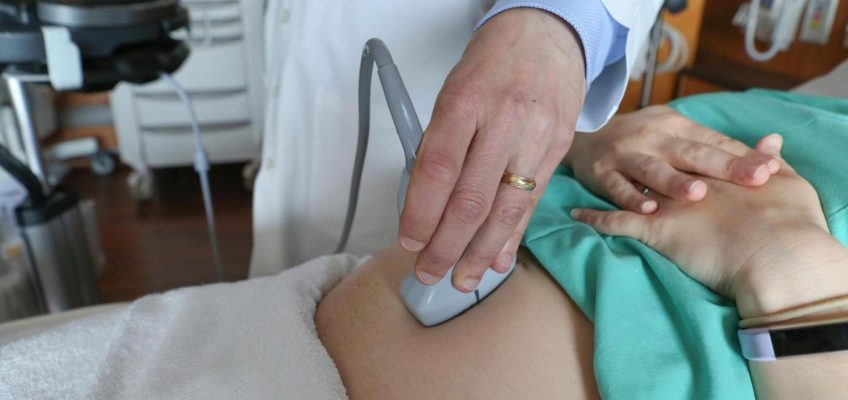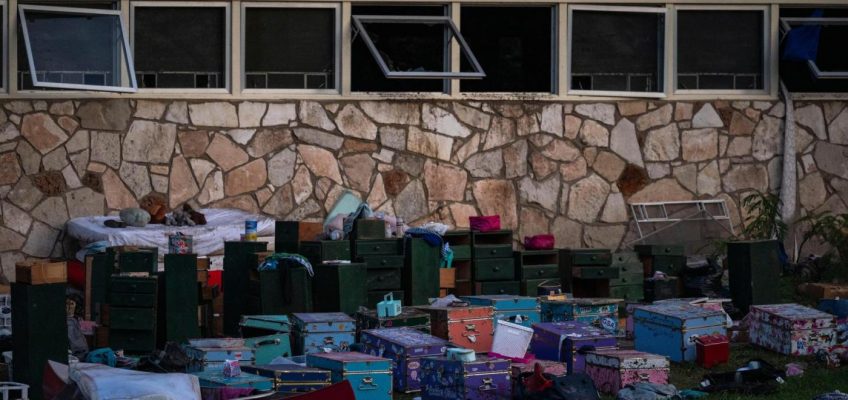By TIFFANY STANLEY and LINLEY SANDERS
WASHINGTON (AP) — While the Trump administration explores ways to encourage Americans to have more babies and reverse the United States’ falling birth rate, a new poll finds that relatively few U.S. adults see this as a priority or share the White House’s concerns.
Instead, Americans are more likely to want the government to focus on the high cost of child care and improving health outcomes for pregnant women, according to the survey from The Associated Press-NORC Center for Public Affairs Research.
Pronatalism, or the promotion of childbearing, has gained traction as a movement within the tech world and among some religious conservatives. Prominent figures on the right like Elon Musk and Vice President JD Vance have espoused pronatalist beliefs, arguing more children are good for society.
The survey finds that only about 3 in 10 Americans say declining birth rates are a “major problem” in the U.S., and just 12% say that encouraging families to have more children should be “a high priority” for the federal government.
Republicans also see affordable child care and health outcomes for pregnant women as higher government priorities than promoting more births, indicating that even as conservatives push pronatalist policies, they’re not getting much buy-in from the GOP base.
“In this day and age, it’s not dire,” said Misty Conklin, a supporter of President Donald Trump, of the declining birth rate.
Conklin, 50, lives in Indiana and thinks the government should prioritize making it more affordable to raise children, including supporting the social services her disabled granddaughter needs.
“It’s hard to live as just a couple, let alone with children,” Conklin said. “It’s getting worse and worse.”
Child care costs are a much bigger concern
Americans are more concerned about the cost of raising and caring for a child than the number of babies being born, the survey found.
About three-quarters of U.S. adults say the cost of child care is a “major problem.” That includes about 8 in 10 Democrats and women, as well as roughly 7 in 10 Republicans and men.
Policies like free or low-cost daycare for children who are too young to attend public school and paid family leave are also popular with about two-thirds of Americans.
For Maria Appelbe, a Trump voter in Arizona, child care costs factored into her decision to quit her job to care for her daughter when she was younger. The 49-year-old said, “I was lucky enough that back in those days without inflation, we were able to make it work.”
Not many US adults are worried too few children being born
Americans seem to have few opinions about the number of children families should have. Demographic projections have indicated the country’s replacement rate is 2.1 children per woman, which would keep the population from shrinking over the long term. However, in the survey, there aren’t strong opinions about whether it’s “mostly a good thing” or “mostly a bad thing” for families to have fewer than two children or more than two.
Appelbe, who has one teenager, thinks financially it makes sense to have small families. “I’m so glad that I was able to give her everything that I could, but I definitely think if I had more children, I wouldn’t have been able to,” she said.
While few Americans say the federal government should make it a “high priority” to encourage families to have more children, a majority, 55%, do want the government to focus on improving health outcomes for women. Black adults are especially likely to say this, as are women. Black women have the highest maternal mortality rate in the United States, which lags behind other wealthy nations in maternal health.
Pronatalism ideas register more with conservatives, but most aren’t thinking about it
There are small signs that some pronatalist policies are registering more with conservative Republicans than liberal Democrats, even though the poll indicates most aren’t thinking about this issue.
Republicans are more likely than Democrats to say it’s “mostly bad” for the future of the U.S. if families have two or fewer children, although relatively few Republicans — about 2 in 10 — hold this view.
A social conservative and fiscal liberal, Dmitriy Samusenko, 28, does not identify with either major U.S. political party. The California resident does think the declining U.S. birth rate is a major problem that will determine if the nation “will continue to exist in the long run.”
Samusenko said he supports “using the government as a resource to enable families to grow and develop.”
Pronatalist advocates have pitched the White House on the idea of a $5,000 “baby bonus” to mothers after a new baby is born. Trump has said it “sounds like a good idea,” but about half of conservative Republicans oppose the $5,000 baby bonus, and about one-quarter support it. Americans overall are more split: about one-third are in favor, about 4 in 10 are opposed, and about 3 in 10 are neutral.
Many see the cost of fertility treatments as a major problem
On the campaign trail, Trump promised to be the “fertilization president.” In February, he signed an executive order supporting expanded access to in vitro fertilization.
IVF is popular among Americans but controversial among parts of Trump’s religious base, notably Catholics and some evangelicals.
Related Articles
Intense downpours like those in Texas are more frequent, but there’s no telling where they’ll happen
Investors snap up growing share of US homes as traditional buyers struggle to afford one
Hope of finding Texas flood survivors dims as search efforts go on
Removing shoes at US airports may soon be a thing of the past
Wisconsin Supreme Court clears the way for a conversion therapy ban to be enacted
About 4 in 10 U.S. adults consider “the cost of fertility treatments” to be a major problem in the United States. Nearly half of U.S. adults “strongly” or “somewhat” favor requiring insurance companies to cover fertility treatments.
Bill Taylor, 72, of Washington state, watched his adult daughter face health challenges and expensive fertility treatments to have a child. He strongly favors the government requiring insurance companies to cover fertility treatments.
Taylor, a Democrat, also said the declining birth rate is a problem, though a minor one.
“Bigger families mean a greater need for government health care and government social programs,” Taylor said. “Conservatives don’t want to do that. They just want to grow the family.”
Associated Press religion coverage receives support through the AP’s collaboration with The Conversation US, with funding from Lilly Endowment Inc. The AP is solely responsible for this content.
The AP-NORC poll of 1,158 adults was conducted June 5-9, using a sample drawn from NORC’s probability-based AmeriSpeak Panel, which is designed to be representative of the U.S. population. The margin of sampling error for adults overall is plus or minus 4 percentage points.



